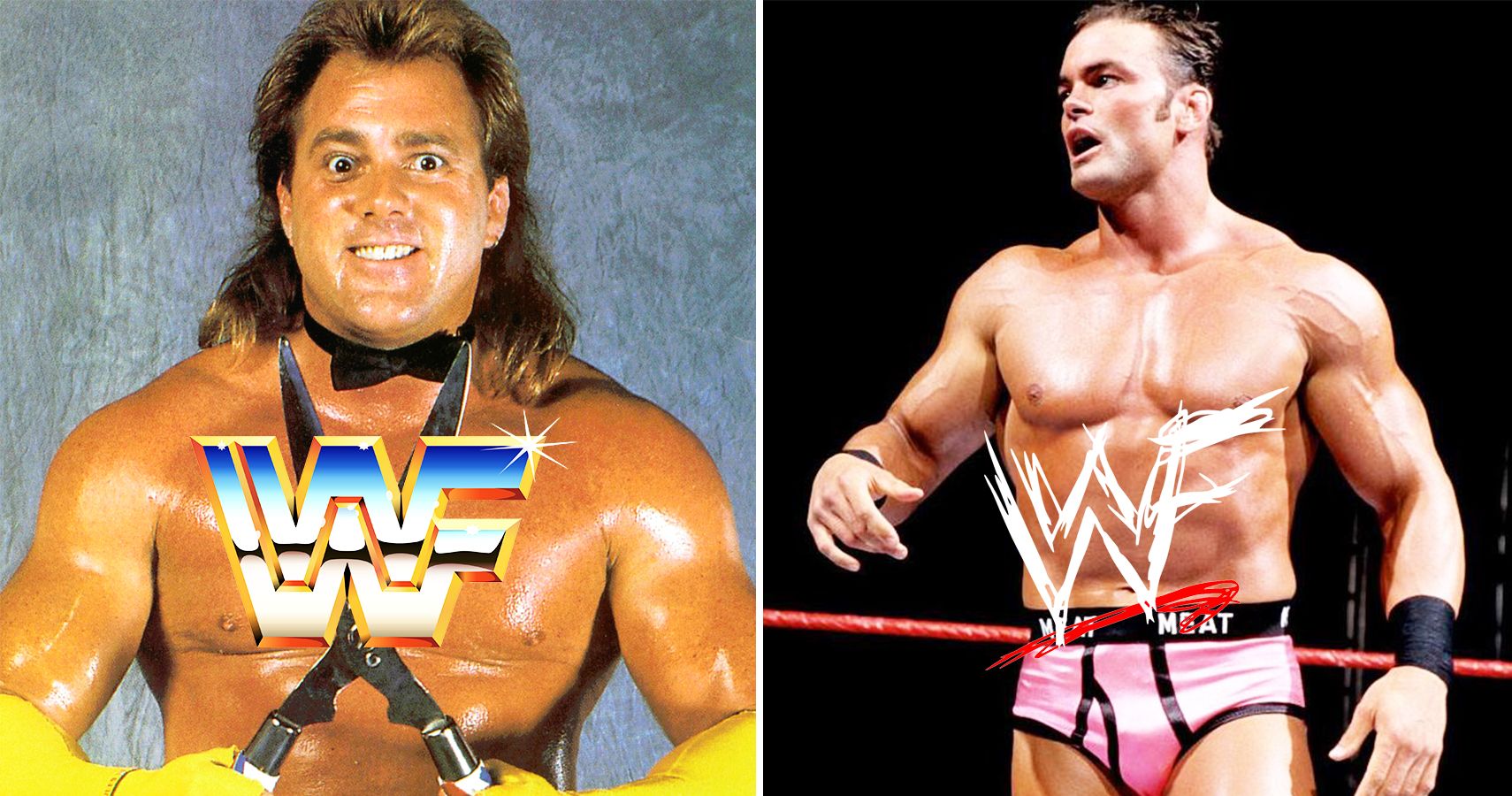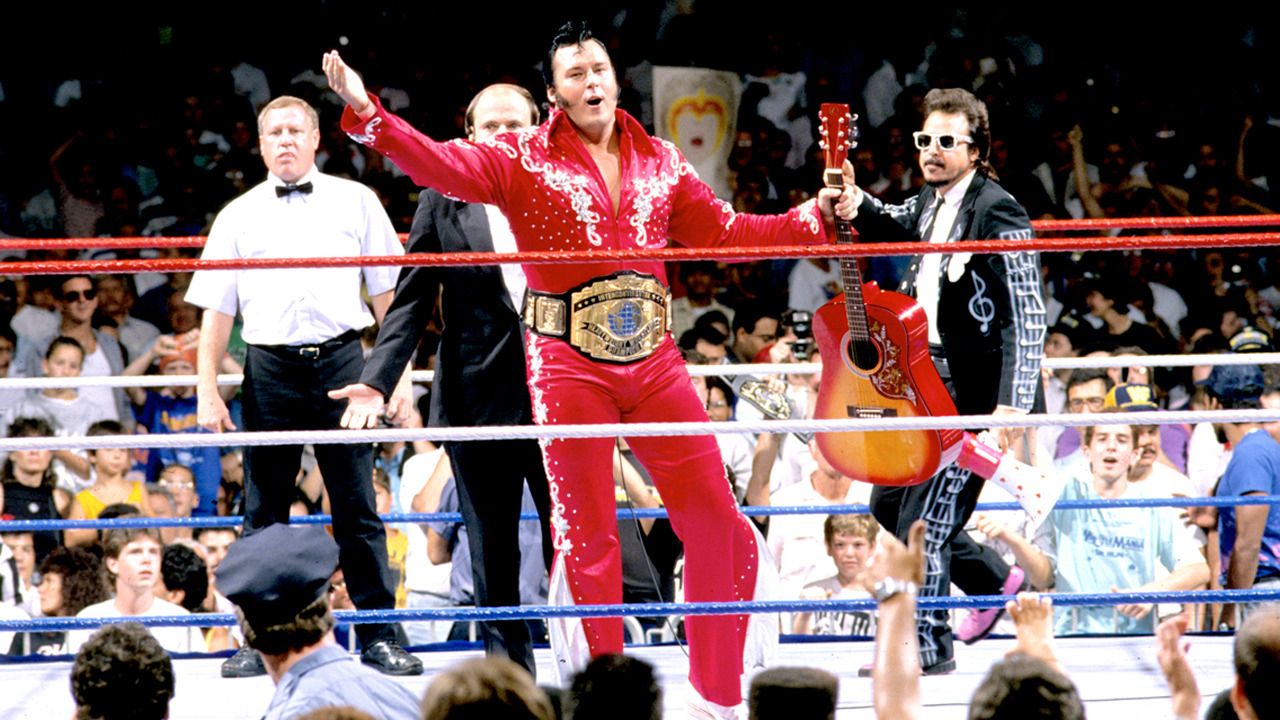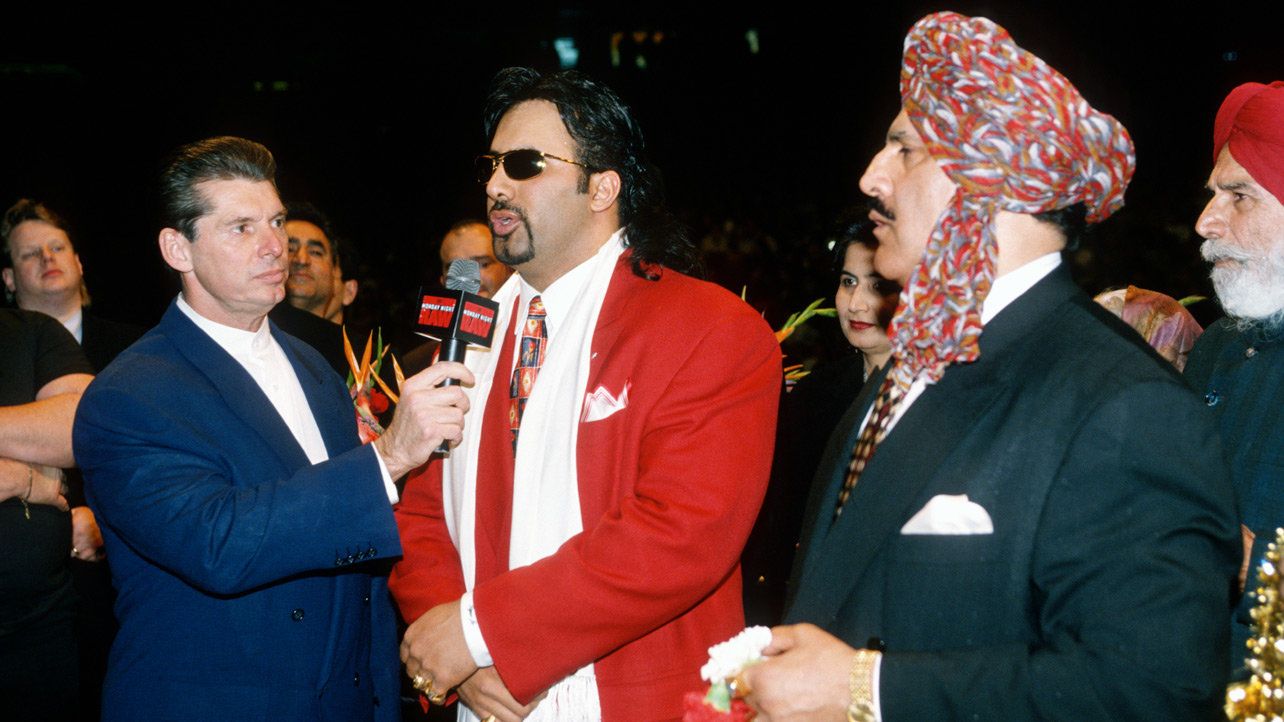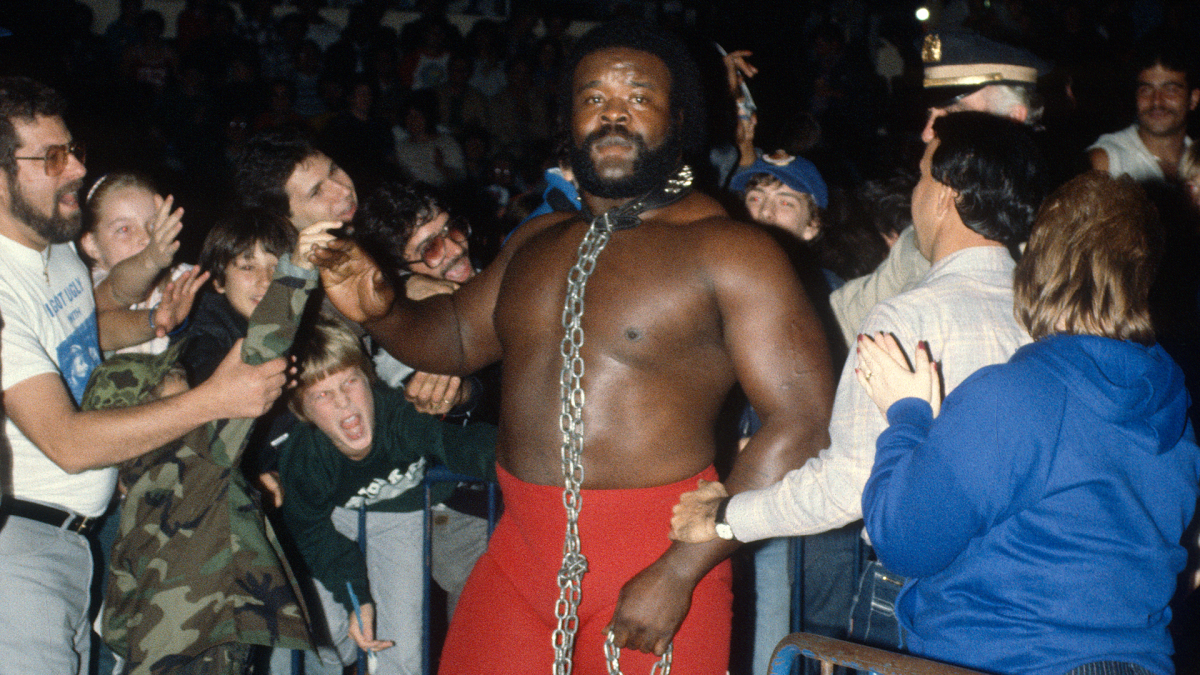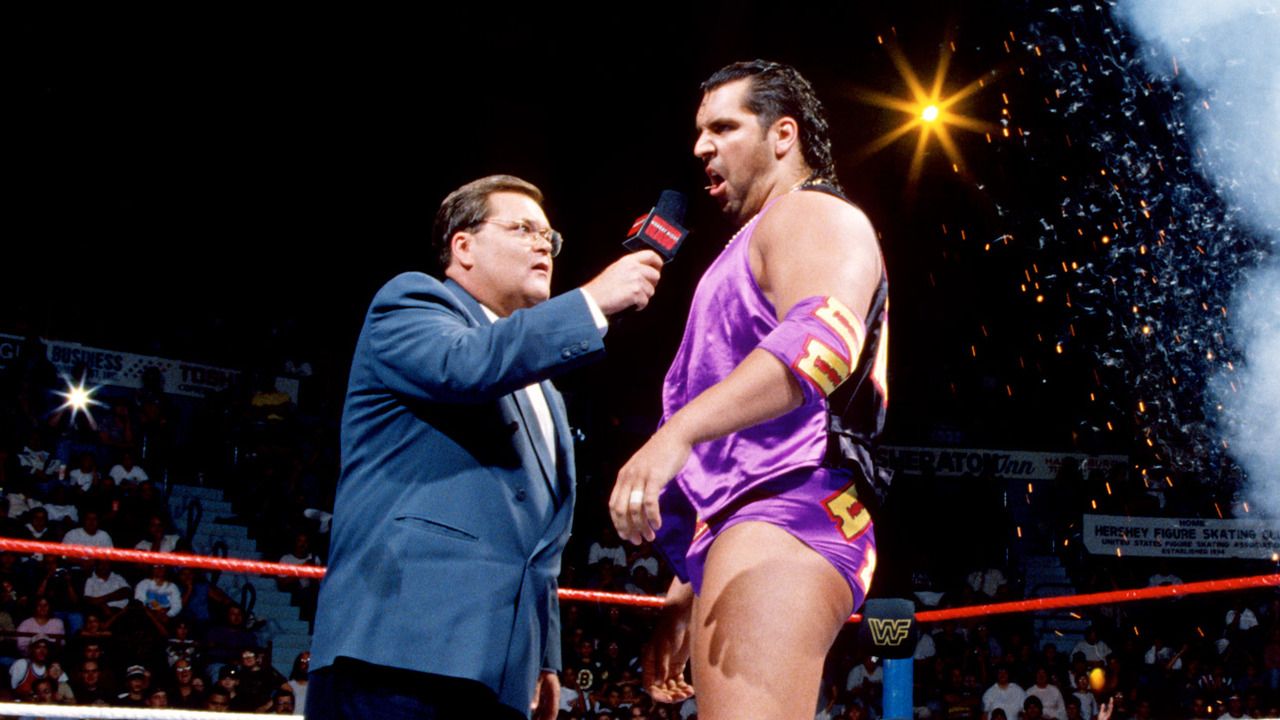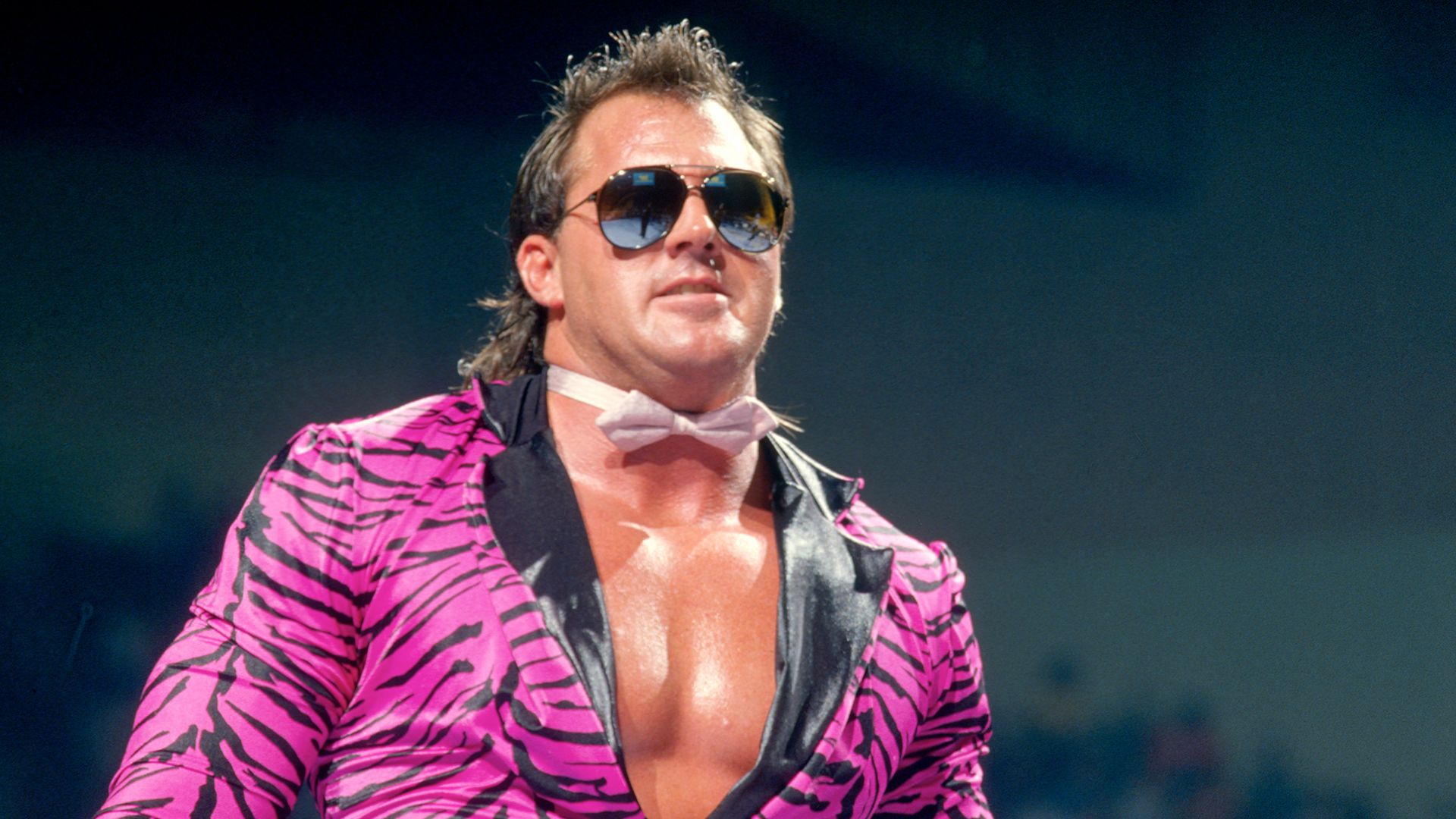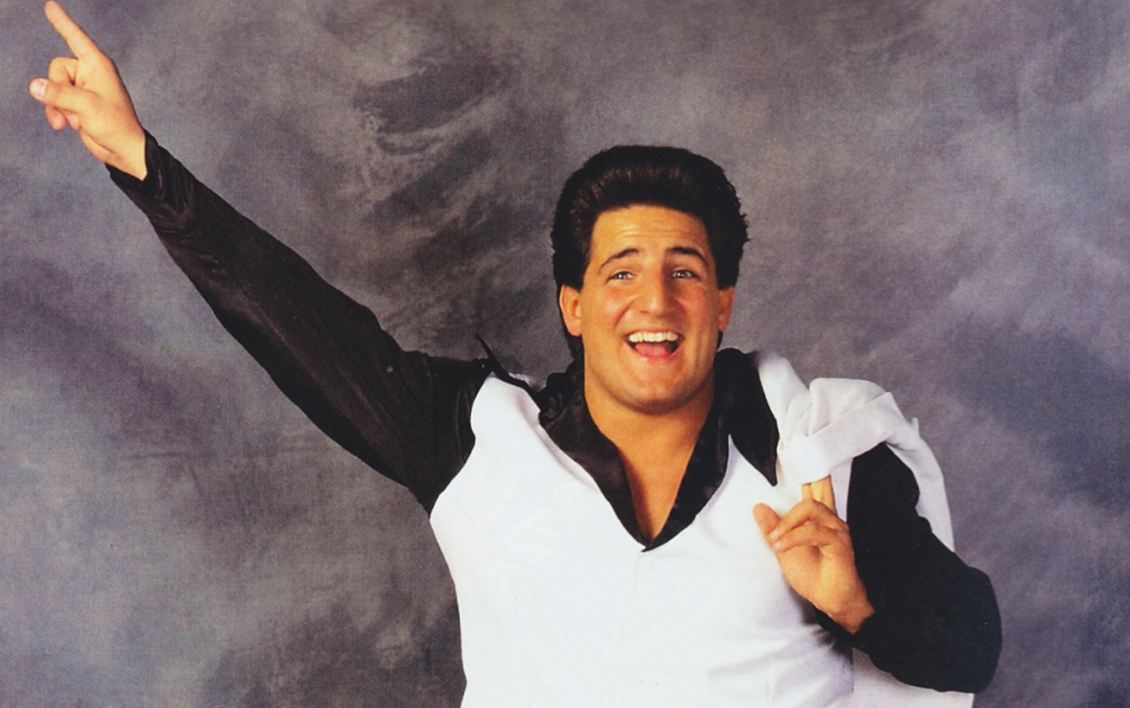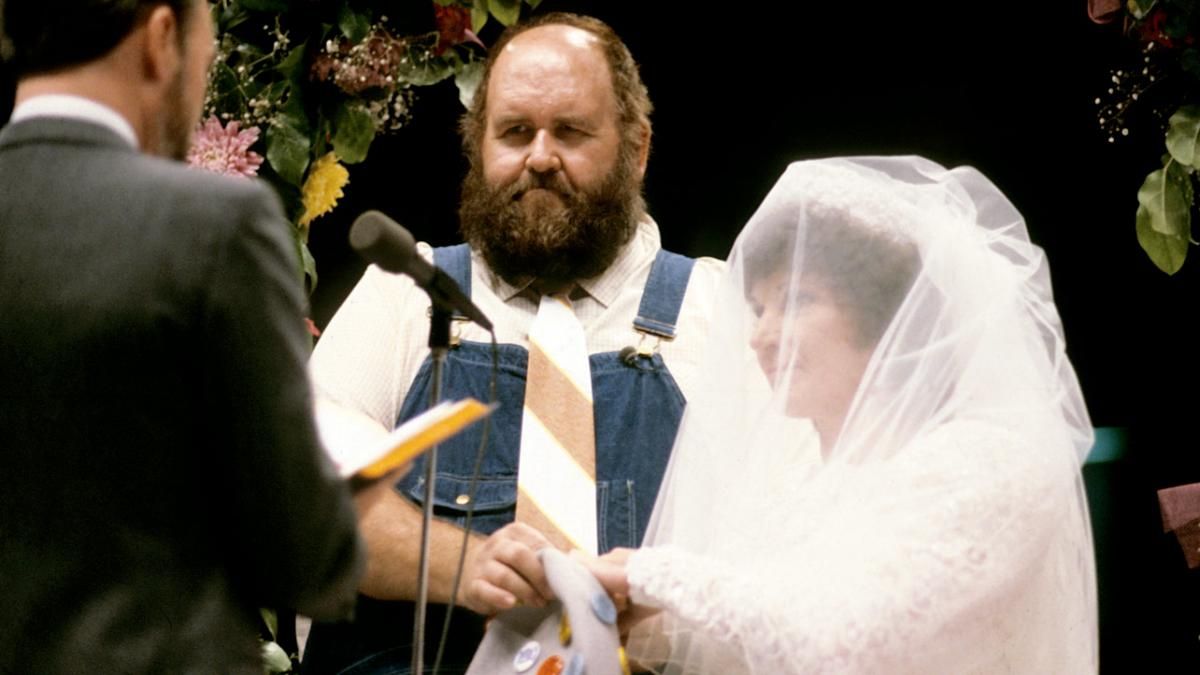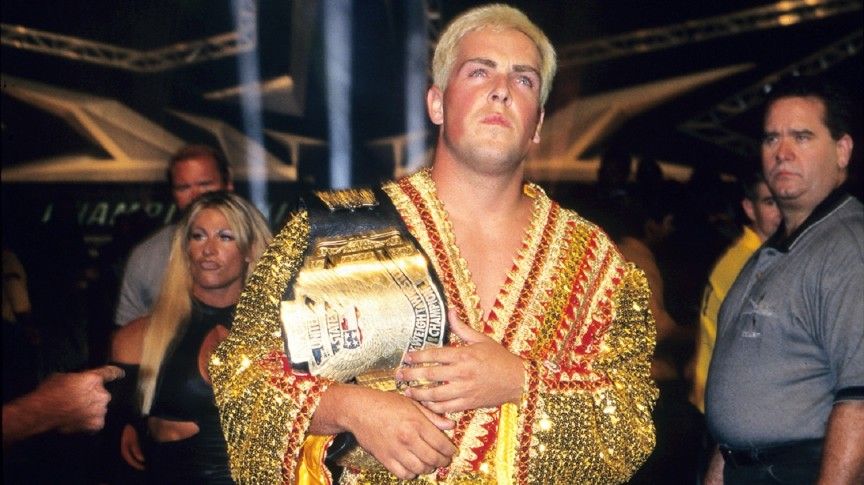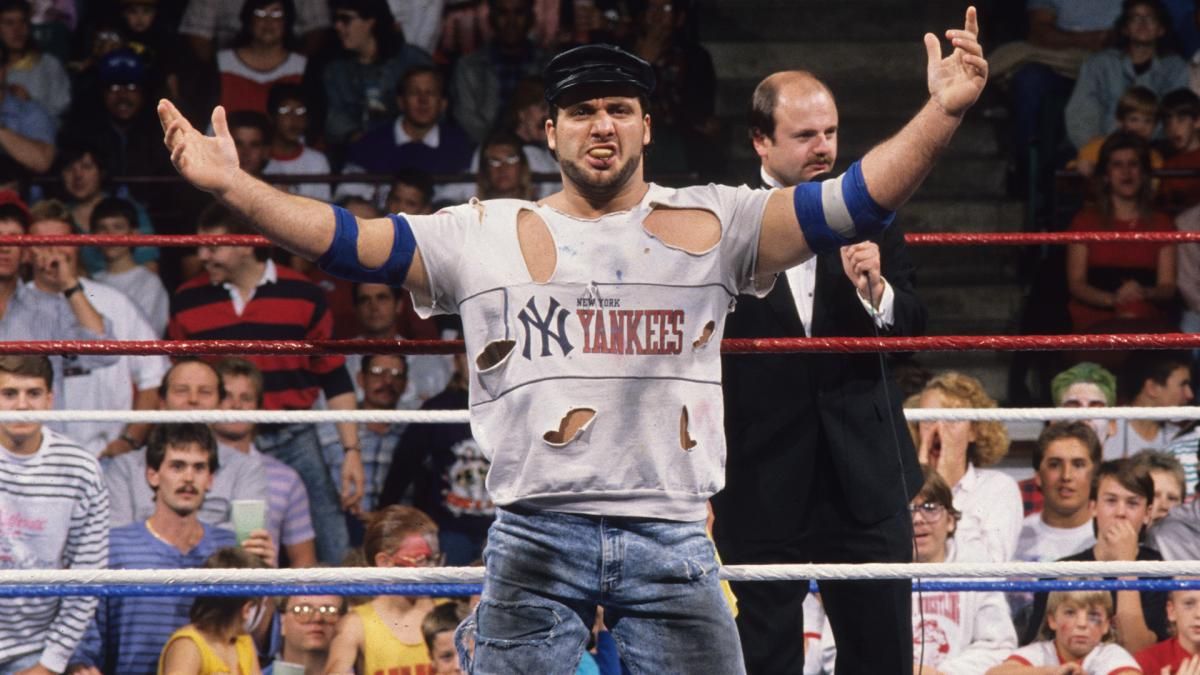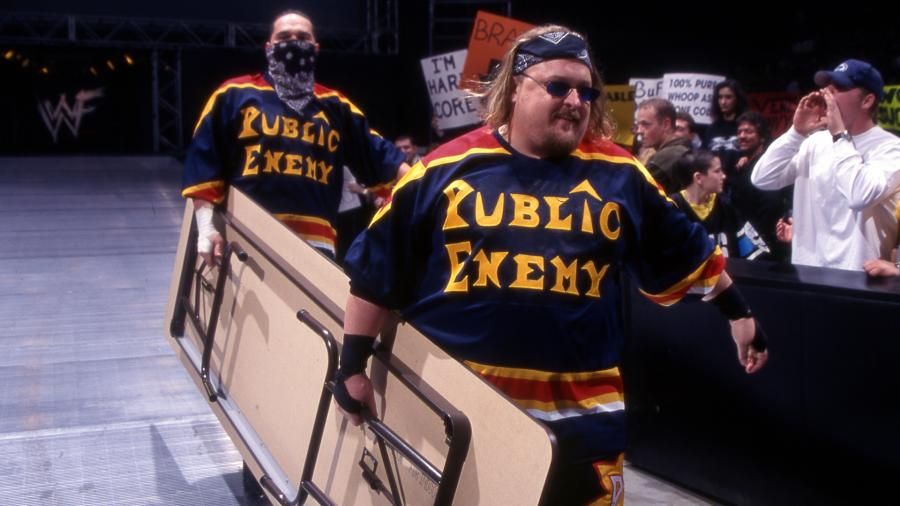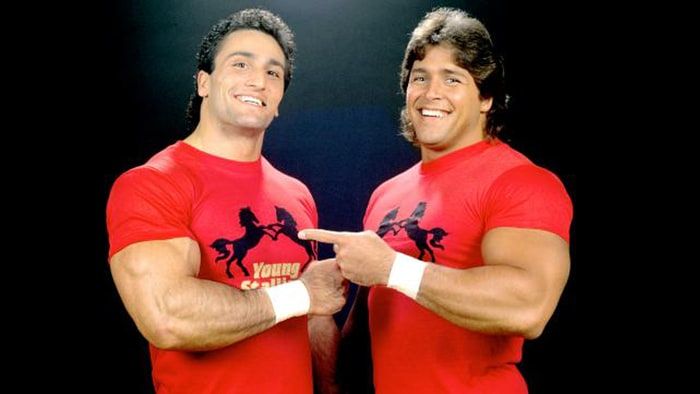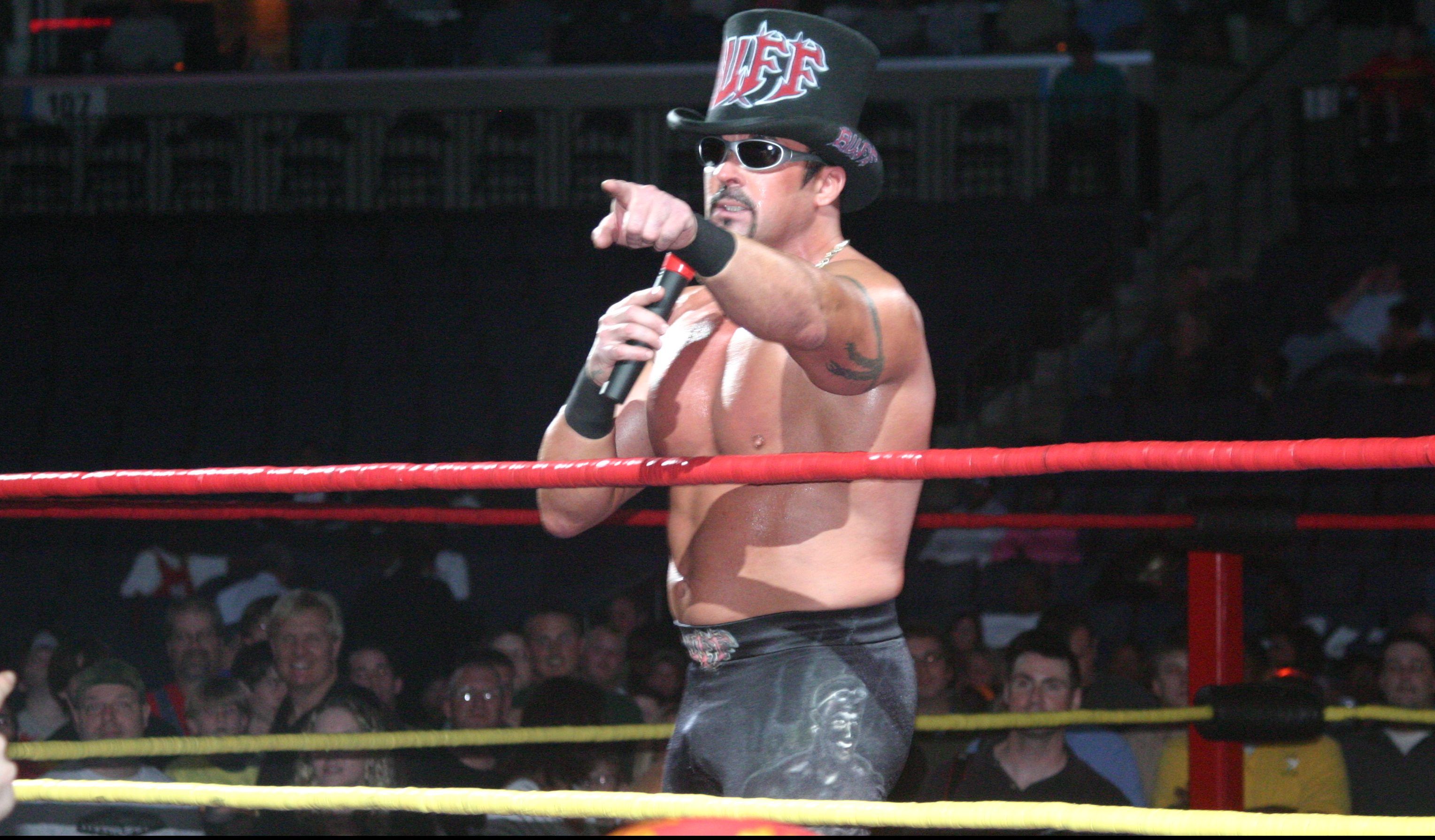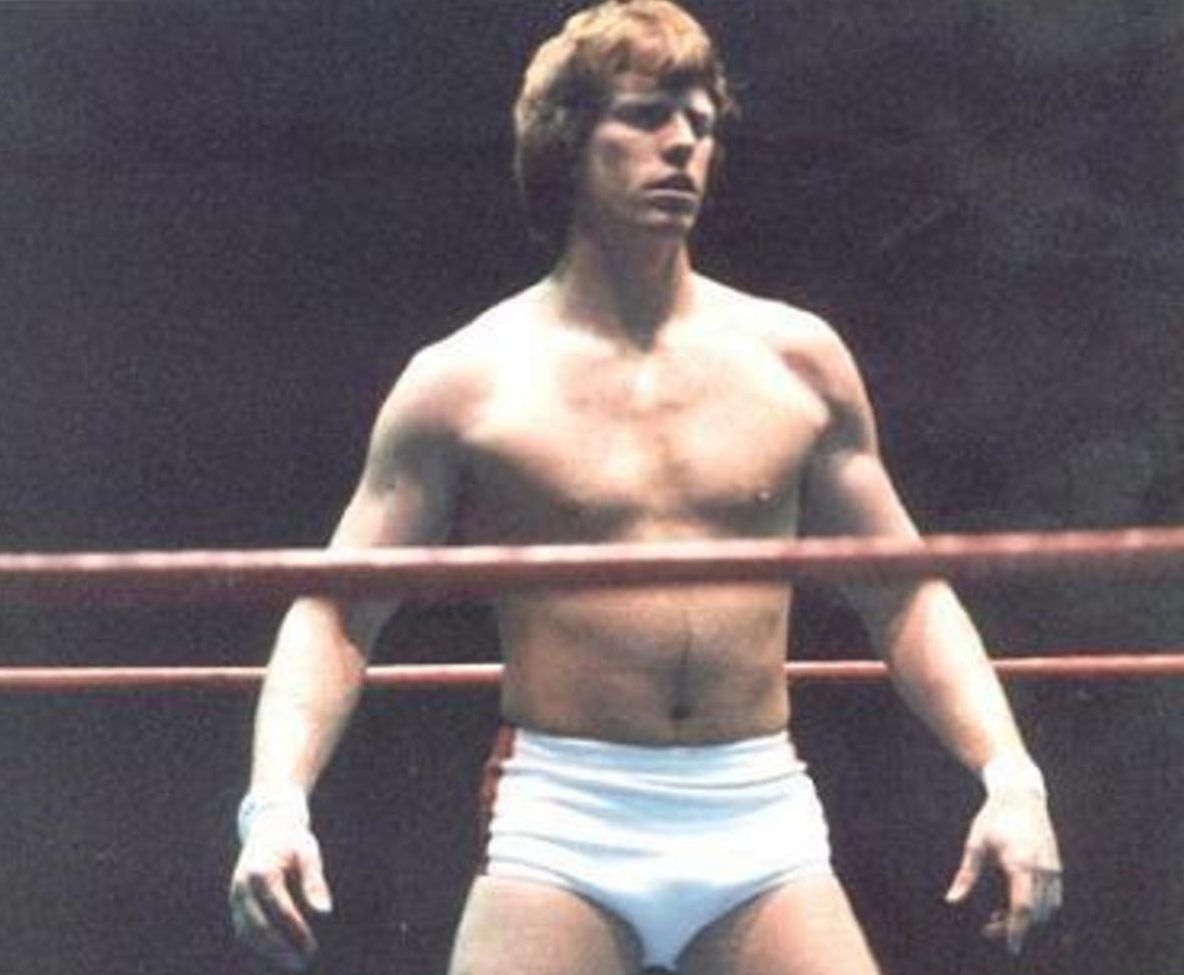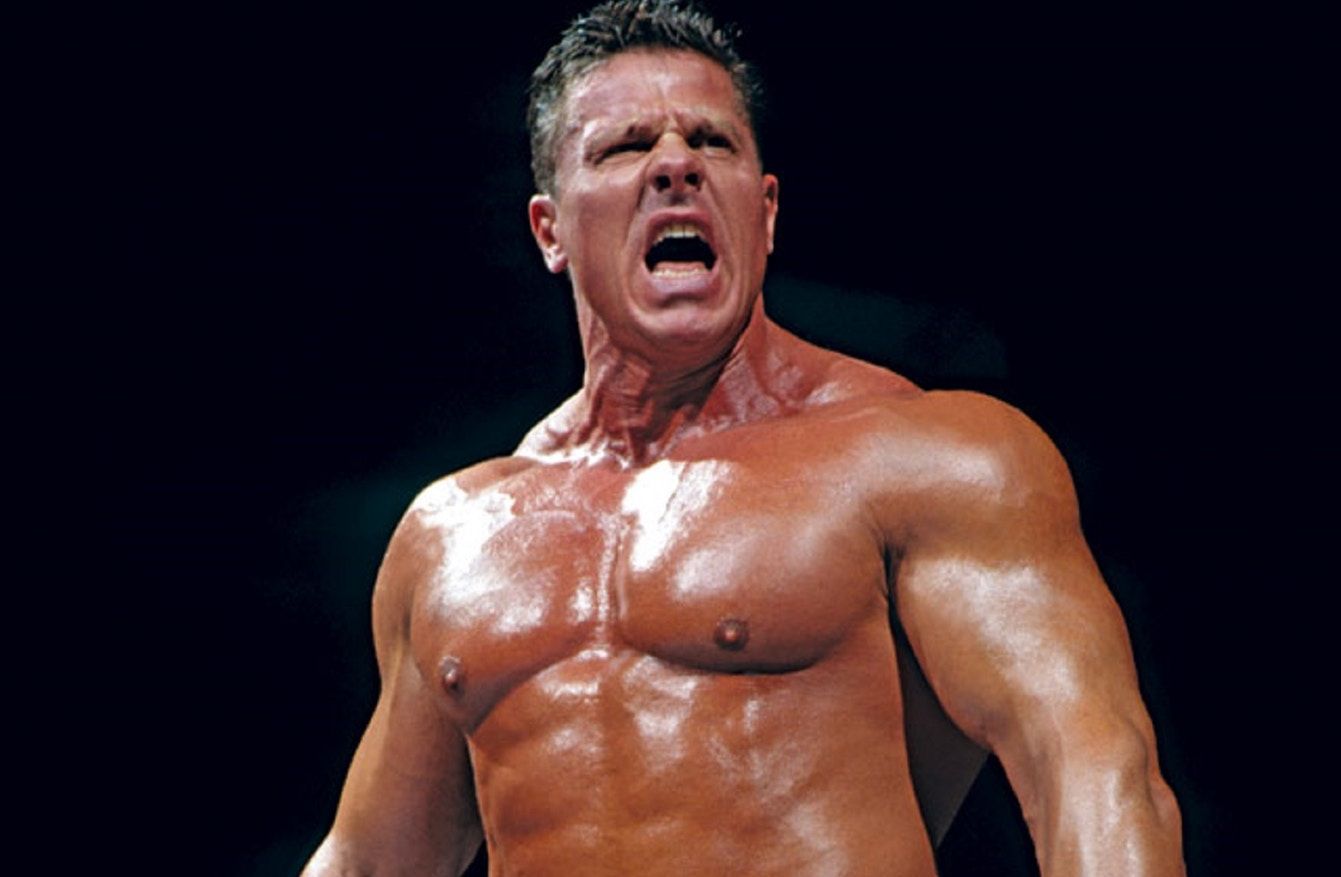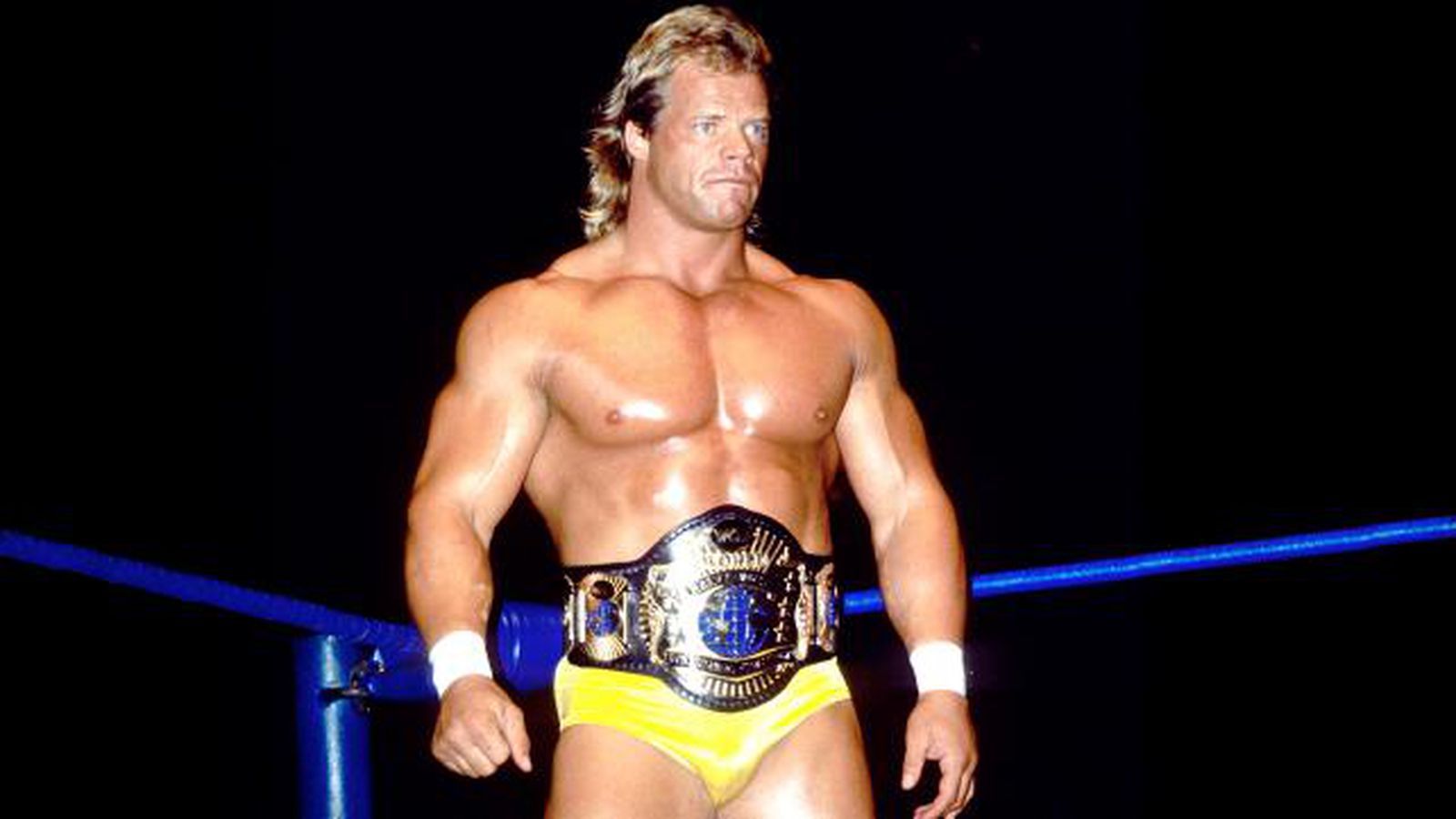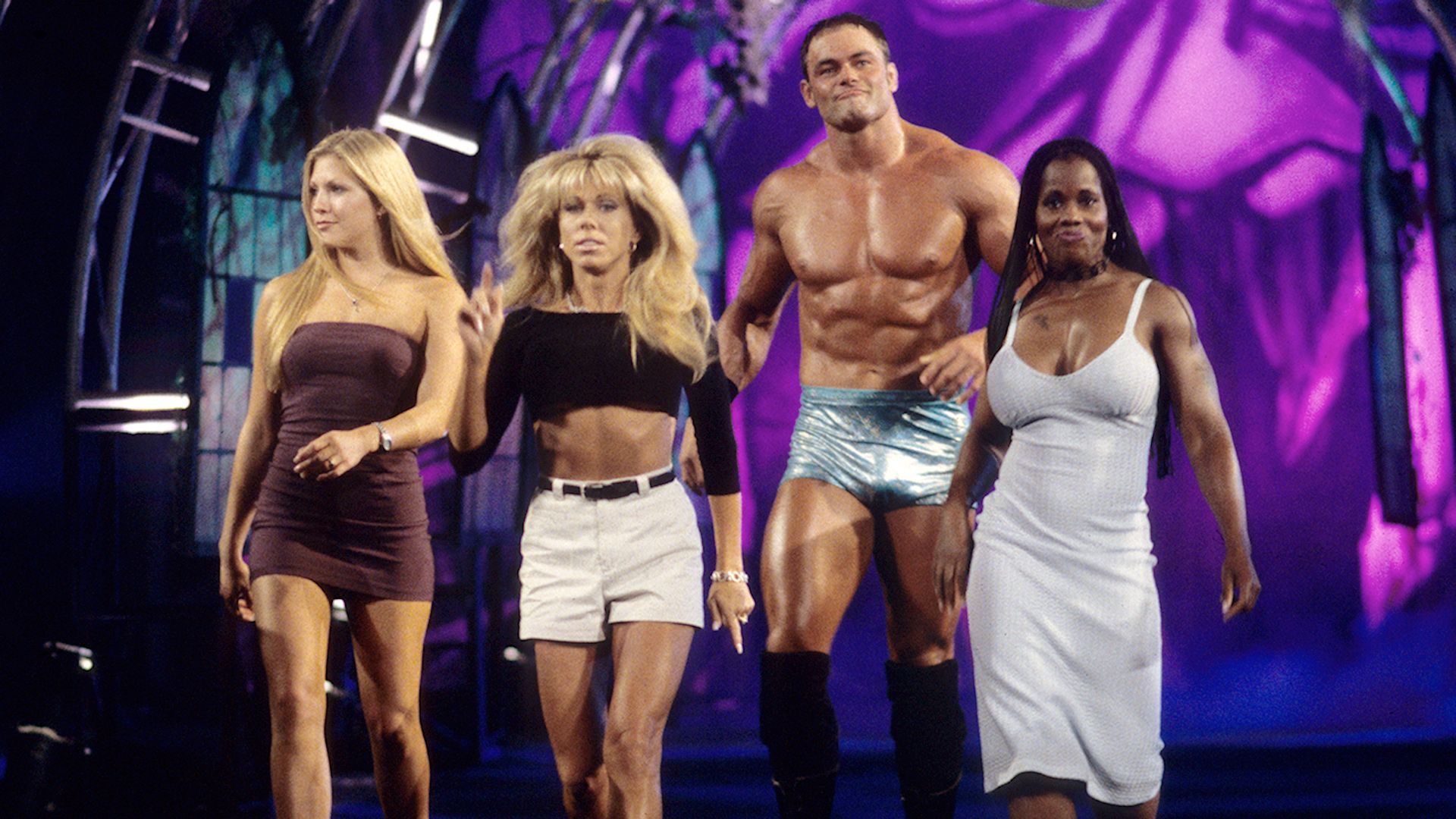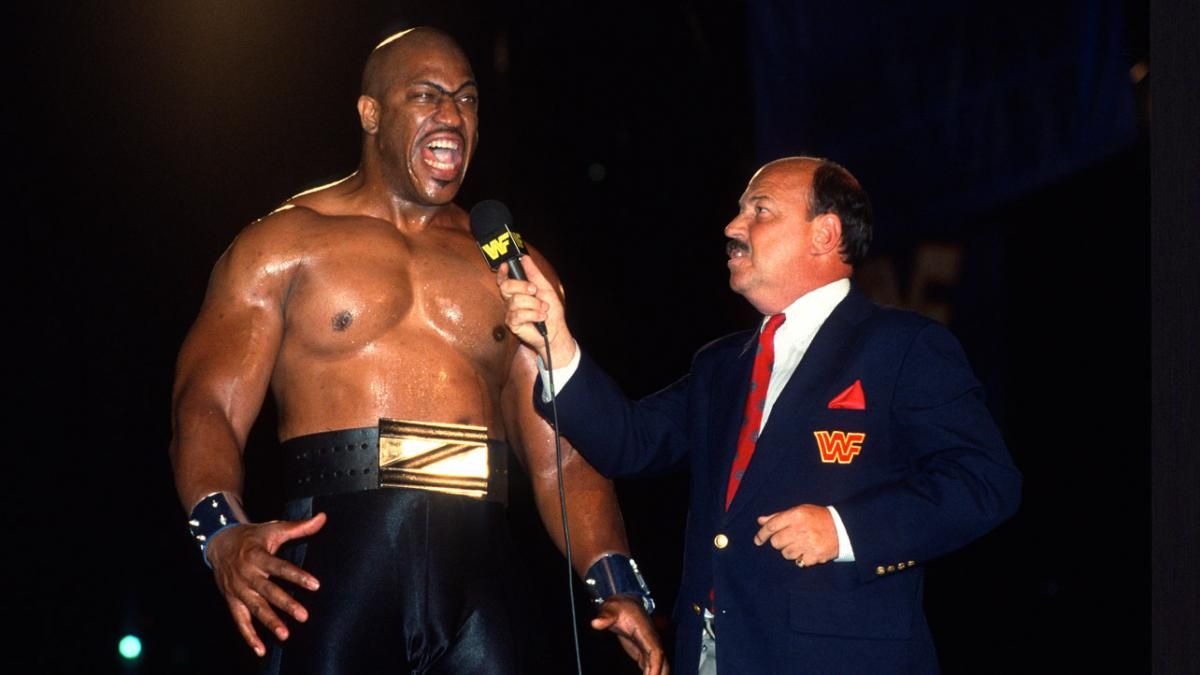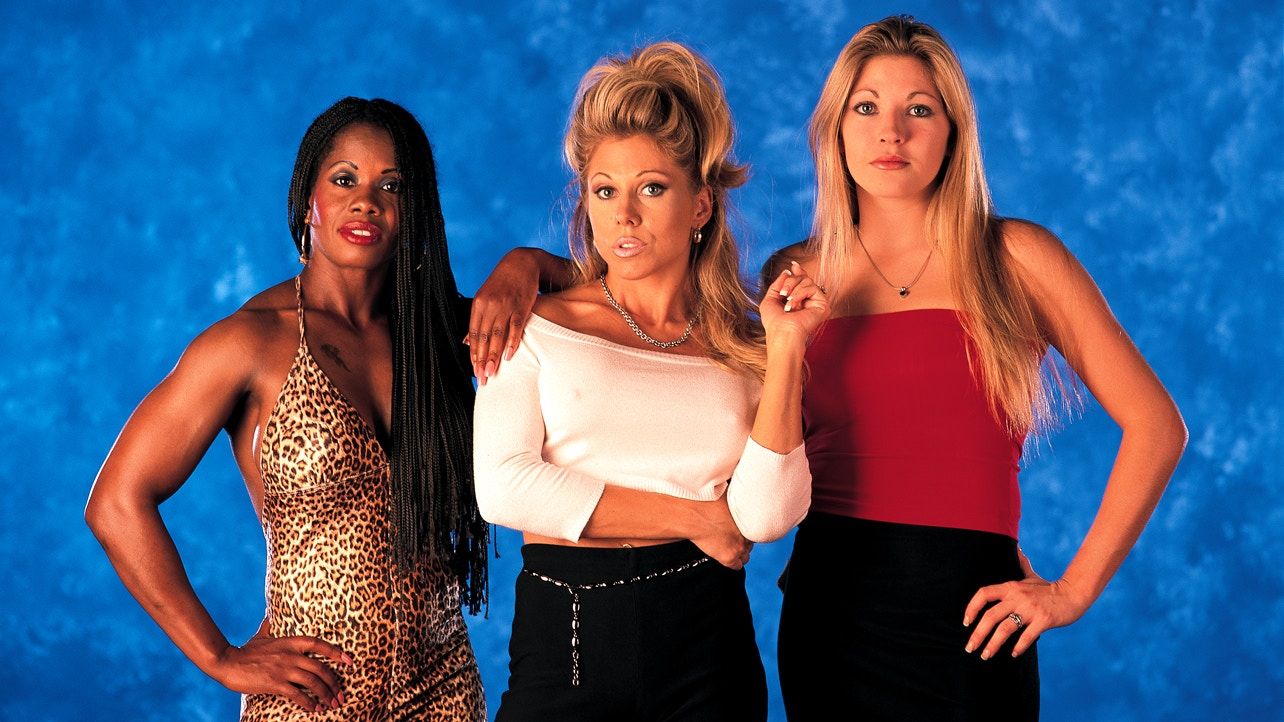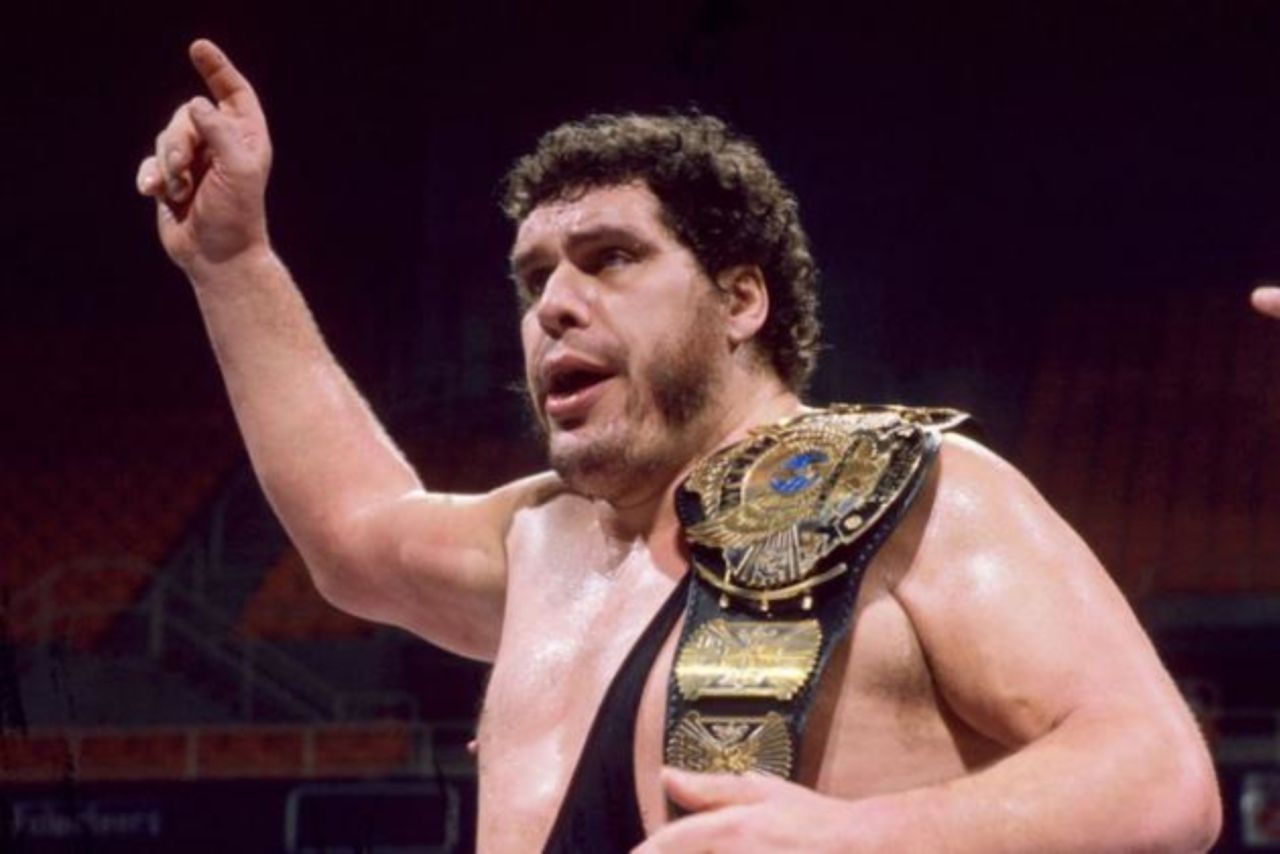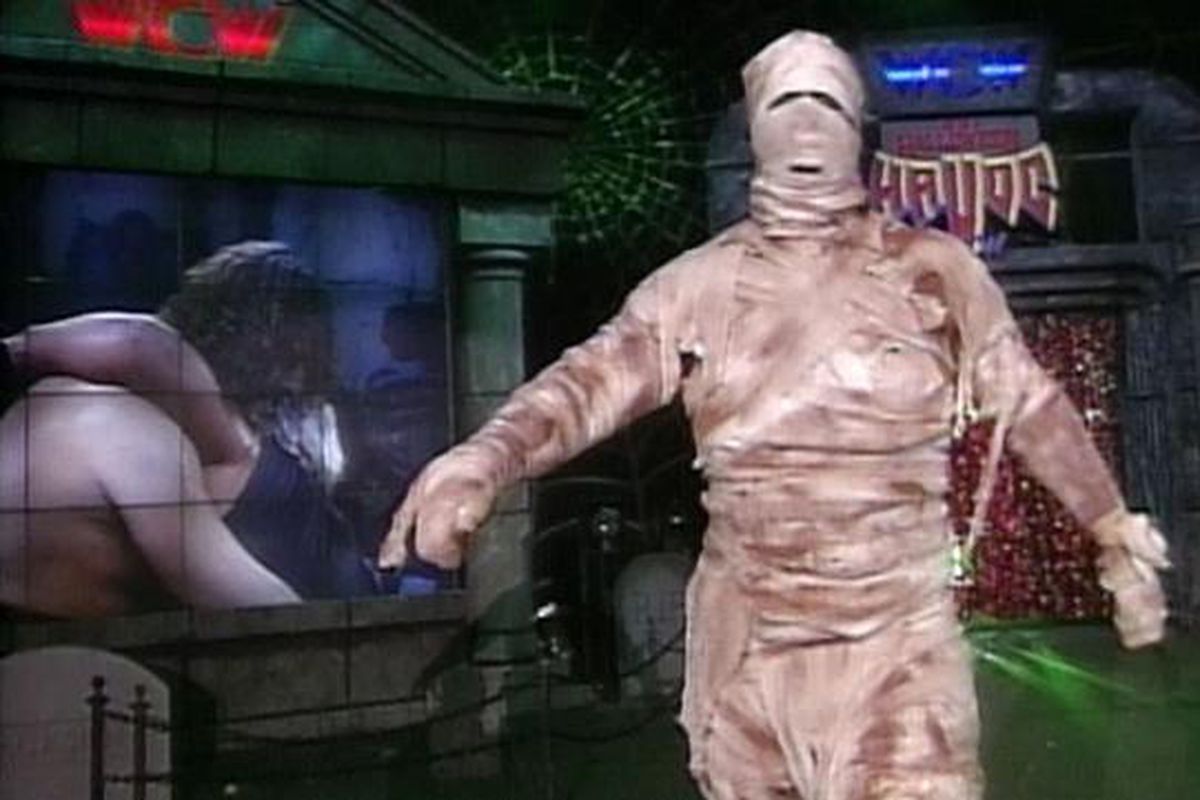We wrestling fans are a nostalgic bunch. We like to look back at certain periods as the glory years—those times when the wrestlers were better and the storylines were more interesting. Sometimes we’re thinking of our youth, when most of us got hooked on wrestling to begin with other. Other times we latch on to a period that specifically appealed to our sensibilities.
Two of the most universally agreed upon golden ages in wrestling converged from the 1980s to 1990s. From the mid to late 1980s, Hulkamania was running wild in WWE and drawing in unprecedented viewership from a truly national audience. Meanwhile, in the NWA Mid-Atlantic, classics like Ric Flair vs. Ricky Steamboat were going down to counter WWE’s awesome showmanship with some of the greatest in ring action fans have ever seen.
While wrestling saw a bit of a lull from the early to mid 1990s, the 90s saw a resurgence. The Monday Night War was on and WCW introduced the New World Order, the crow version of Sting, and Goldberg. Meanwhile, Attitude took hold of WWE with the rise of Stone Cold Steve Austin, The Rock, Triple H, Mick Foley, and a cast of other universally recognizable, super talented stars.
For all of the great qualities of this golden age in wrestling there were nonetheless some pretty lousy talents who got a shot at the spotlight, even grabbed a foothold as inexplicable mainstays when most fans would question if they ever should have made it to TV in that era at all. This article looks back at ten of the worst wrestlers form the '80s and ten of the worst from the '90s.
20 20. '80s: The Honky Tonk Man
When fans reflect on the Intercontinental Champions of the 1980s, names like Randy Savage, Ricky Steamboat, and The Ultimate Warrior come to mind. Guys with incredible talent, or at least incredible gimmicks that made them icons of their time.
And then there’s The Honky Tonk Man.
Honky Tonk was a pudgy Elvis impersonator who was never especially believable as a professional athlete. While he was competent in the ring and did draw heat, he was not a talent of the caliber of any of the men who held the title around him, so many of whom went on to win world titles or enter the main event picture. The Honky Tonk Man reached his peak with the Intercontinental strap but mind-bogglingly held it longer than anyone else ever has in the single longest consecutive reign of all time.
19 19. '90s: Tiger Ali Singh
Tiger Ali Singh was a second generation wrestler whom WWE introduced to fans in early 1997 at the very beginnings of or just before the Attitude Era (depending on how you gauge the time period). He peaked by winning the short lived Kuwait Cup tournament’s 1997 edition. The problem was the guy just didn’t have anything going for him.
In ring talent? Nah. An awesome look? Meh. Ability to connect with the fans? Not so much. Singh fell flat on pretty much every level in WWE, and before long was relegated to manager duty. He wasn’t much of a success there either was someone WWE shrewdly enough cut their losses on to focus on stars with more promise as they moved into one of their hottest periods.
18 18. '80s: The Junkyard Dog
The Junkyard Dog got wildly over based on his charisma working in Bill Watts’s Mid-South territory. His act worked in no small part because he looked like an everyman, and was a black superstar, playing to a diverse demographic in an era when black athletes—including those in the world of wrestling—weren’t getting equal opportunities. Vince McMahon wound up scooping up JYD during his 1980s national expansion.
While The Dog remained reasonably popular during his WWE run, he was also exposed for not being much of an athlete or technician. He got by on pure charm and personality—factors that would only carry him so far with national audience and surrounded by other top stars who’d gotten over at the highest levels in their own respective home territories.
17 17. 90s: The Fake Razor Ramon
After Scott Hall and Kevin Nash defected to WCW, WWE decided to take advantage of its trademarks with an ill-advised storyline in which heel Jim Ross introduced a fake Razor Ramon and fake Diesel. While the shtick worked adequately as a one time ratings ploy, as curious fans wondered if the former WWE stars really were returning to the fold.
The gimmicks were largely embarrassing as two green stars tried to fill the shoes of top guys and looked plainly second-rate. In the long run, the fake Diesel would prove himself as he improved over the years in the Kane gimmick. This was as high as the fake Ramon would ever reach, though, as he never amounted to much on his own merits in the wrestling world.
16 16. '80s: Brutus Beefcake
Brutus Beefcake is a recognizable figure from 1980s and 1990s WWE and WCW. His Barber gimmick and hedge clipper accessories were part of the fabric of WWE in particular. He was in the mix for the Intercontinental and Tag Team Championships at different periods in the 1980s. The uncomfortable reality of the situation, though? The guy was never particularly good.
What Beefcake was was Hulk Hogan’s real life best friend and a notorious brown noser. By most accounts, he got as many opportunities as he did as an upper mid-card player in WWE on account of this friendship. Oddly enough he’d arguably get even bigger opportunities in WWE as he rotated between playing Hogan’s best friend and arch rival in high profile roles—including a main event run—that he didn’t really have any business in.
15 15. '90s: Disco Inferno
Disco Inferno was a super strange figure in 1990s WCW. By most accounts, the guy had a good mind for the wrestling business, and he was serviceable enough worker between the ropes. By the same token, his gimmick was preposterous, particularly as WCW grew more cutting edge and realistic in the '90s. Disco Inferno represented a time period long past—the '70s in a literal interpretation of his gimmick, the '80s in committing to a silly gimmick and for his cartoonish working style in the ring.
A number of Disco’s contemporaries, including Chris Jericho, have stood up for him for working hard and getting his gimmick over in spite of the odds. That’s probably a fair enough assessment, but nonetheless, Disco Inferno managed to stay strangely relevant for a strangely long period of time given what he ostensibly brought to the table.
14 14. '80s: Uncle Elmer
Hillbilly Jim is a minor icon of the Rock ‘n’ Wrestling Connection, but is remembered much more for his impressive stature and distinctive look than much discernible talent as a wrestler. Then there’s Uncle Elmer, Hillbilly’s in ring ally in a rough around the edges group of a country characters. Elmer, too, was impressive for his size at nearly seven feet tall and over four hundred pounds.
Elmer was mostly played for laughs. A man of his size, over 20 years into his wrestling career, he wasn’t able to do much of note in the ring. So, WWE settled for using him as a comedic device to poke fun at country people. His most memorable moment with the company was probably his kayfabe wedding to his real life wife on a Saturday Night’s Main Event, which was not exactly an auspicious occasion in WWE history.
13 13. '90s: David Flair
It’s hard to condemn David Flair. WCW roped him in because they thought Ric Flair’s real life son could add some drama and some reality bending edge to storylines. It wasn’t David’s fault that he became a major player in the company’s storylines before he was ready, nor that WCW kept him on as an eccentric full time performer even after the original novelty had worn off.
Make no mistake about it, though, David was a terrible wrestler. The Flair family is great at wrestling, including Ric as one of the best of all time, Charlotte increasingly making a claim to be one of the best female performers of all time, and Reid purportedly showing all the potential in the world before his untimely death. Unfortunately, David, who got the spotlight when wrestling was white hot, in no way lived up to that family reputation. To his credit, he did try to improve and did his best in WWE’s developmental system and on the indies after WCW, but he’d never accomplish much of note in wrestling outside that few year period in the Monday Night War era.
12 12. '80s: The Brooklyn Brawler
The Brooklyn Brawler is a bit of an odd pick for this list because, unlike most of the other entries, I actually don’t think Steve Lombardi—the man beneath the gimmick—was a bad worker. He was, however, a casually rebranded enhancement talent who became a recognizable character for little clear reason. Outside of briefly aligning with Bobby Heenan to feud with The Red Rooster, he never actually accomplished anything of note, and always lost on WWE TV.
When the peak of your career is feuding with Terry Taylor at his absolute worst, in an unspoken battle of who could get the most out of an embarrassing gimmick—well, that speaks volumes about The Brooklyn Brawler. For better or worse, he would stick around the WWE landscape on and off for nearly two decades, and continued to make guest cameo appearances into the 2010s.
11 11. '90s: The Public Enemy
The Public Enemy were a well known tag team coming out of ECW who got attention from both WCW and WWE during the Monday Night War era. While Rocco Rock and Johnny Grunge were reasonably charismatic and had infectious theme music, in the ring, the twosome were stiff and sloppy.
While they somehow earned multiple opportunities with WCW, their WWE tenure is most famous for a run in with The Acolytes. Public Enemy purportedly had bad attitudes and tried to get the match restructured or changed, which rubbed Ron Simmons and Bradshaw, not to mention the WWE brass, the wrong way. The result? The Acolytes gave them a very real, company sanctioned beatdown in front of a live audience. The Dudley Boyz spoke about it in a WWE-produced documentary—that the failures of The Public Enemy reflected on them, too, as new arrivals from ECW and they had to prove themselves by taking a beating from the APA and not complaining about it, to distinguish themselves from the less tough, less professional Public Enemy.
10 10. '80s: Jim Powers
In the 1980s, WWE leaned heavily into its enhancement talent as virtually every televised match was squash built to spotlight a featured performer at the expense of a jobber. The Young Stallions were an unusual act for the time, because they were occasional victors and even worked their way onto the occasional PPV card, but nonetheless almost always lost.
The team was composed of Paul Roma and Jim Powers. While plenty of folks have blasted Roma for his arrogance, and particularly for the ill-fit he had working with The Four Horsemen in WCW, he nonetheless did demonstrate some talent during this period. While Jim Powers had a good, musclebound look, he never demonstrated quite so much potential. Roma put a finer point on it a recent podcast interview with Steve Austin when he complained about how lazy Powers was and that he substance abuse was an issue for the guy.
The weak link of The Young Stallions? Powers definitely deserves a spot on this list.
9 9. '90s: Buff Bagwell
Every now and again, there’s a wrestler who plays an arrogant jerk so effectively that you can’t help wondering how much he’s really acting. After he started out as a white meat babyface, that’s exactly the heel character that Buff Bagwell turned out to be for WCW in the 1990s, and particularly when he was a part of the New World Order.
Bagwell was never particularly sharp in the ring, and it was particularly embarrassing to see him go over guys who were world class talents like Curt Hennig. Just when Bagwell had some legitimate interest around him after a neck injury and an apparent face turn, he wound up promptly turning heel again to retread old WCW storylines once again in the unmistakable style of WCW at the time.
8 8. '80s: Mike Von Erich
The lore of the Von Erich wrestling family is well known for being one of wrestling’s most tragic tales. Fritz Von Erich was a star, and his boys were wildly over for a time in Dallas. Sadly, one by one, the boys passed away too soon until it was just Kerry and Kevin, two of the best talents among the group, but nonetheless sad to see on their own, before Kerry committed suicide to leave Kevin all by himself.
Amidst all of this was Mike who, frankly, wasn’t meant to be a wrestler. He wanted it bad and tried hard, but never came along as even a passable mid-card talent. After an uncelebrated career that included a number of injuries, he wound up committing suicide—a sad outcome for a guy whom you can only imagine would have gotten more fulfillment out of life had he not gone into the family business.
7 7. '90s: Brakkus
Brakkus was an awesome physical spectacle—super strong and he looked the part. It’s little surprise WWE felt drawn to him in the 1990s and went to great pains to try to get him to succeed as a professional wrestler. Unfortunately, the guy just wasn’t made for the wrestling business.
After a few starts and stops that included him cutting promos on top talents, WWE farmed him out to smaller companies to get some experience only to come back an only marginally more ready talent. He worked the mid card in 1998, most memorably losing his first round shoot fight in the Brawl For All tournament, opposite Savio Vega.
If you don’t remember Brakkus, you’re surely not alone. Though he may have been one of the wrestlers WWE saw the most in in his era, he wound up utterly forgettable relative to the icons of the period.
6 6. '80s: Lex Luger
While Lex Luger would emerge as a memorable, enough not excessively talented main event star for both WWE and WCW in the 1990s, he got his start in wrestling in the 1980s. It wasn’t pretty.
To be fair, Luger did have an absolutely killer physique, and as WWE went national building on the back of Hulk Hogan, it made sense enough that WCW tried to build up its own musclebound super hero. Unfortunately, Luger got plugged into the main event picture while he was still super green. The result? Lackluster performances all around to the point that when the time came, in the early 1990s, that WCW wanted Ric Flair to put him over for the world title, Flair flat out refused, knowing that Luger wasn’t ready.
5 5. '90s: Meat
Sometimes, a name says it all. Meat is a pretty dumb name for a professional wrestler and, sure enough it was a pretty awful gimmick for young Shawn Stasiak, the son of old school WWE Champion Stan Stasiak. In an interesting turn, he was the objectified man, and subject of abuse for the Pretty Mean Sisters stable. It wasn’t a great look for a wrestler, though perhaps it was a fair enough use of the young man given he wasn’t really equipped to do much in the ring at that point.
To Stasiak’s credit, he would grow as a performer in the years to follow with WCW, and to the point he could justify making it back to WWE for the InVasion angle in 2001.
4 4. '80s: Zeus
In the late '80s, WWE decided to capitalize on Hulk Hogan’s overwhelming popularity by taking a leap into the movie business. The company put its money and its top star behind No Holds Barred an alternate universe take on wrestling for which Hogan played Rip and Zeus was his arch-rival.
It was a fair enough premise for its time (if a pretty awful movie). Things took a turn however when WWE opted to invite Zeus into the real wrestling world to play a real (kayfabe) challenger to Hogan. The problem? While Zeus had a killer look, he was in no way trained to wrestle. As a kid, I recall finding him an awesome spectacle of a heel. It’s amazing how smoke and mirrors can work in a context like that, because looking back, the big guy had absolutely no business in wrestling, let alone working main events.
3 3. '90s: Ryan Shamrock
Ken Shamrock was a super promising star of the Attitude Era. With a great look, a fun dynamic when he “snapped,” and the real life credibility of a mixed martial artist, he got over and was entertaining for the fans. It’s sensible enough, then that WWE try to add dimensions to him, including a sister he could defend against men like Val Venis.
Enter Ryan Shamrock. A beautiful woman to play Shamrock’s sister. The trouble is that when it came to actual talents applicable to the wrestling world, she brought very little to table. In the end, her greatest claim to fame may be a plot that never actually happened—the widely rumored angle that Vince McMahon allegedly pitched for the kayfabe siblings to work an incest storyline. Ken purportedly rejected it and Ryan never wound up doing much of interest.
2 2. '80s: Andre the Giant
Andre the Giant is a legitimate legend in wrestling. In his prime, he was a very good performer who, in particular, knew how to use his incredible size to function as not only a spectacle that captured the imagination, but to put on legitimately entertaining performances in the ring.
As the 1980s settled in, Andre’s body was deteriorating. A number of parties close to him suggest that he was ready to retire by the middle of the decade, only for Vince McMahon to reel him back in with the prospect of WrestleMania 3—a heel turn and working with Hulk Hogan in front of a stadium crowd for the biggest spectacle in wrestling history.
While the match wasn’t objectively much good, it worked in its context and was an iconic moment for the business. It was all down hill from there for the Giant, though, as he broke down more and more with each passing year, though he was still a big enough star to be a draw. Finally, WWE settled on a fair use for him in late 1989 into early 1990, as half of a tag team for which Haku could be the workhorse, and Andre could provide an ominous threat from the ring apron.
1 1. '90s: The Yeti
In 1995, WCW introduced The Giant who would go on to become The Big Show and have a remarkably long, successful career in wrestling. That same year, they unleashed The Yeti as a fellow member of Kevin Sullivan’s Dungeon of Doom stable.
The concept was sound enough, with seven foot monsters roaming the landscape, posing an irresistible threat to Hulk Hogan and friends. The trouble was The Yeti was extremely green, and his most memorable moment wound up being a double bearhug on Hogan, with The Giant, which looked uncomfortably similar to the two big men dry humping Hogan’s unconscious body.
The guy would settle into more fittingly mid-card gimmicks in the years to follow, never advancing much as a talent, but an adequate big man heater as part of Raven’s Flock.

